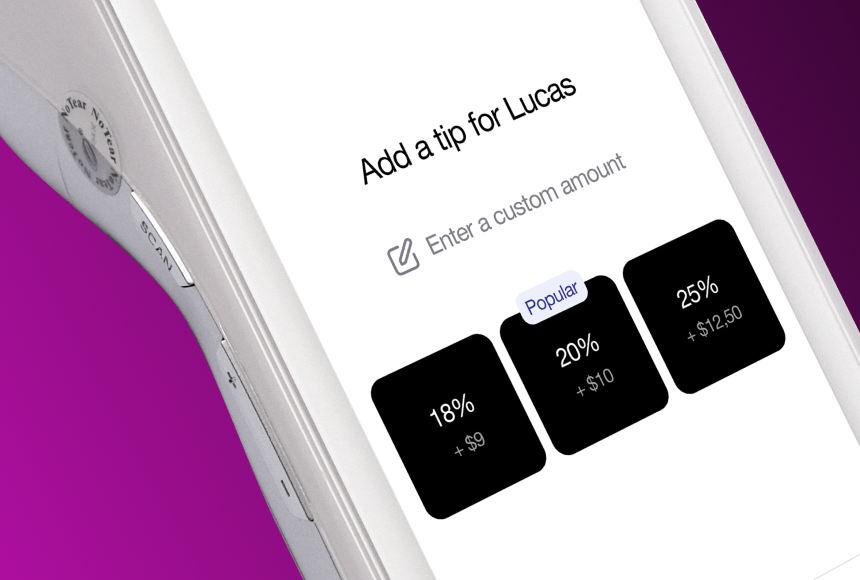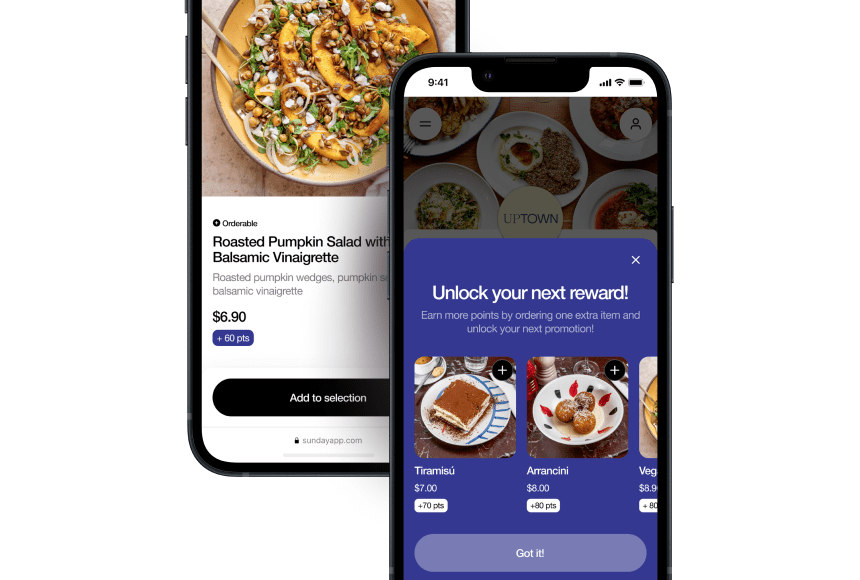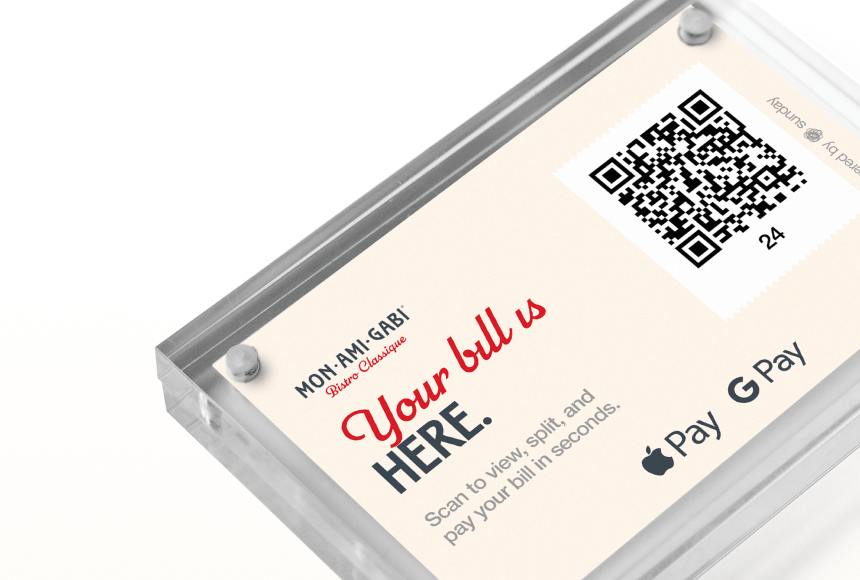
Digital Gratuities: Inspiring Quality Service Without the Stress
Why Are We Talking About Digital Tipping?
Digital tipping has become a hot topic in the restaurant world, and for good reason. Like a perfectly balanced recipe, technology has combined convenience with a more flexible approach to gratuities. In a traditional setting, servers approach a table with a check, customers leave cash or sign a receipt, and that’s that. But in today’s fast-paced environment, the process has transformed.
For many restaurants, a digital tipping system offers the same sense of appreciation but removes potential pressure (or awkwardness) about how much to tip. Customers can use their smartphone to pay and tip quickly and discreetly, including via QR codes readers—and even leave a Google review right from the app if such an option is integrated. It’s intuitive, efficient, and well-suited to the habits of the modern diner. With this new approach, restaurant owners see an opportunity to streamline operations, avoid unsightly stacks of paper receipts, and potentially boost both their staff’s income and workplace satisfaction.
If you’re curious about how digital tipping can encourage better service without piling on the stress, you’re in good company. As an owner, manager, or operator, you want to make the experience comfortable for both your guests and your team. Let’s explore exactly how that can work and why it might be the right move for your restaurant.
Understanding the Rise of Digital Tipping
The restaurant industry has evolved significantly in the past decade. Online reservations, mobile menus, and immediate customer feedback on social media have all influenced customer expectations. With the rise of contactless payments—including QR code payments—digital tipping has gained traction. According to a report by the National Restaurant Association (source), contactless and digital payment methods have surged in popularity as restaurants strive to streamline operations and improve the guest experience.
The idea is simple: instead of leaving a paper receipt where customers add a tip and sign, diners can review their check on their phone, add a tip amount, and pay immediately. The entire process can often be completed in less than a minute. This level of convenience speaks to a culture that’s become accustomed to everything—from personal banking to grocery shopping—being executed via smartphones.
While digital tipping was initially perceived as a “nice to have,” it’s rapidly becoming an integral part of the restaurant payment landscape. Guests appreciate the convenience, while restauranteurs benefit from fewer errors and a more modern brand image. And for servers, it often means more tips and fewer misunderstandings about who left what on the table. But the real question is, does digital tipping actually encourage better service, or does it apply more pressure on guests? The answer, as we’ll see, involves some nuance.
Benefits of Digital Tipping for Servers and Guests
Digital tipping presents a range of advantages. By eliminating the need for customers to wait around for terminal hand-offs or rummage around for loose change, you’re creating an environment that fosters better communication and service. Let’s explore these benefits in straightforward terms.
For Servers
- Higher gratuities on average: Some studies indicate that when people tip digitally, they often opt for suggested preset tip percentages, which can lead to slightly higher gratuities. In many digital interfaces, you see tip options like 15%, 20%, or 25%, which might nudge customers to choose a more generous amount.
- Reduced errors and disputes: Handwritten digits on receipts can lead to confusion, lost receipts, or mistakes. Digital systems help ensure accuracy.
- Streamlined payouts: When tips go through a digital system, it can be easier for management to automatically tally and distribute them—no more piles of receipts to review at the end of the night.
- Less awkwardness: Servers don’t have to stand at the table waiting for a signature or wait until guests leave to see the tip, which can reduce stress and help maintain a friendly vibe.
For Guests
- Convenience: People use their phones for everything else, so paying and tipping digitally is a logical extension of daily habits.
- Clear suggested tip options: At times, customers appreciate a simple guide for tipping. If they had a great experience, they can quickly opt for a higher suggestion. If it was average, they can stick to a baseline percentage.
- Fast checkout: No waiting for a credit card to be run through a POS system. Simply scan a QR code or tap to pay, add tip, and you’re done.
- Less social pressure: Digital tipping can be discreet, sparing guests that uncomfortable moment of making their tip amount visible to other people at the table.
It’s crucial to remember that technology should not replace the personal human connection that’s at the heart of great hospitality. Instead, digital tipping solutions are a tool to enhance the experience for everyone involved.
How Digital Tipping Encourages Better Service
One of the biggest questions for restaurant owners is whether digital tipping actually drives better service. While it doesn’t magically turn a subpar server into a superstar, the framework does create an environment where shining hospitality is more likely to be recognized—and rewarded.
Speed and Focus
When staff are less burdened by the nuts and bolts of payment processes—like bringing the check, chasing down receipts, or waiting for credit cards to process—they can devote more time to genuine customer interaction. With digital tipping:
- Servers can answer questions faster.
- Kitchens get orders through more accurately, as servers aren’t juggling as many tasks simultaneously.
- Guests feel well-attended to without feeling rushed or ignored.
If there’s a myth that technology erodes human connection, in many restaurants the opposite is true. Server interactions become more personable, and as a result, guests can be more inclined to reward great service with a higher tip.
Real-Time Customer Feedback
Some digital platforms include an option to leave quick feedback—like star ratings or short comments—along with the tip. This immediate feedback loop can encourage servers to be on their A-game. Instead of waiting for a negative Yelp review to show up days later, the server (and the restaurant) can promptly see if there’s a trend in areas like friendliness or responsiveness.
For owners, this information can be aggregated to spot where training might be beneficial. It can also highlight star servers who consistently receive stellar feedback. Rewarding positivity encourages a cycle of good service, appreciated by loyal patrons.
Empowering Guests to Tip Fairly
Digital tipping can be a confidence booster for customers, too. They can choose an amount that matches the service they received, without fumbling through their wallets and feeling the eyes of others on them. This reduces the pressure to conform to any social expectation in the dining room.
By putting the tip decision into a neatly presented digital interface, diners can tip mindfully and privately. When people tip more thoughtfully, servers often notice that the gratitude is genuine, which is a strong motivator to deliver excellent service time and time again.
Addressing Concerns: Is There Added Pressure?
Whenever a new technology is introduced, there can be concerns. One question that sometimes arises is whether digital tipping might actually increase the pressure to tip—such as apps that flash recommended amounts. Let’s talk about that.
Transparency Versus Pressure
There’s a difference between transparency and coercion. A well-designed digital interface can offer tip suggestions without pressuring the customer. For instance, a platform might show three preselected percentages and an additional field for a custom tip. Customers are free to ignore the suggestions and go with what feels right. If your system is integrated in a mellow, no-nonsense manner, it shouldn’t feel like an up-sell.
Customer Perception
Some guests might be unfamiliar with digital tipping and worry that their personal data is at risk or that they’ll be identified if they tip less. Clearly explaining how the data is processed, what the tipping procedure looks like, and emphasizing that it’s secure can go a long way. Most people simply want an efficient way to complete their check. If it’s done well, your diners will likely embrace it without feeling cornered.
Team Training
If your servers are well-trained on how to introduce the digital tip option, they can do so in a friendly, matter-of-fact manner. Phrasing like, “Feel free to scan the code and add a tip if you’d like” is less intimidating than a forced sales pitch.
Think of it like offering dessert: there’s a difference between, “Here’s the dessert menu—please take a look if you’re interested,” and “Would you like a slice of cake right now? I can bring it over quickly.” The first approach informs, the second can overwhelm.
In essence, digital tipping can remain a purely optional, straightforward way of expressing gratitude for good service.
Implementing a Seamless Digital Tipping Experience
Bringing digital tipping to life in your restaurant can feel like a daunting challenge, but with the right approach, you can serve it up on a silver platter. Below are a few pointers on how to make the entire process smooth from the perspective of both your guests and your staff.
1. Choose the Right Payment Solution
Not all digital payment platforms are created equal. When you’re researching, look for features such as:
- Easy QR code scanning that leads directly to the check
- Customizable tip suggestions
- Compatibility with existing POS systems
- Security features (encryption, PCI compliance, etc.)
Some systems, like sunday, offer intuitive QR code-based payment that also makes it easy for customers to leave a gratuity and even post a quick review on Google. It’s all about reducing the friction in the payment process so guests can settle up whenever they’re ready.
2. Train Your Team
Much like rolling out a new seasonal menu, a digital tipping system calls for proper training. Staff should know how to:
- Explain the digital payment steps clearly to guests
- Understand how tips are tallied and distributed
- Address any customer questions or concerns
- Walk diners through the process if requested
Encourage them to view digital tipping as a way to enhance, not replace, the personal connections they forge with customers.
3. Promote Data Security and Privacy
Reassure guests that their credit card information and tipping amounts are secure. Most modern digital payment solutions employ layers of security, including tokenization and encryption. Consider posting a small note or including a short statement on your website (or even via a table tent) explaining how you protect sensitive information. Building trust is key; once diners know you respect their security and privacy, they’ll be more comfortable embracing digital payments—and tips.
4. Gather Feedback and Iterate
Whenever you implement something fresh, expect a learning curve. Gather feedback from both customers and staff. Are there any hiccups? Does the interface confuse some diners? Maybe your servers have discovered a more streamlined way to introduce digital tipping. Keep that feedback loop open. Tweak your approach, refine your settings, and adapt until you’ve found the sweet spot.
| Implementation Step | Key Focus | Outcome |
|---|---|---|
| Select Digital Payment Platform | User interface, POS integration, tip flexibility | Positive guest experience and straightforward reporting |
| Train Your Team | Clarity, empathy, consistency | Confident staff who guide diners effectively |
| Promote Security | Encryption, PCI compliance | Builds trust, reduces hesitation |
| Gather Feedback | Continuous improvement | Refined, more user-friendly process |
Case Study: A Neighborhood Bistro’s Digital Transformation
Imagine a neighborhood bistro called Meadow & Vine. They serve traditional American fare with a twist—a cozy spot with about 30 tables. The owner, Danielle, noticed tips had become inconsistent. Tourists swung by daily, but some didn’t carry cash, and others found it cumbersome to leave the right tip, especially if they weren’t familiar with typical local practices.
Danielle decided to give digital tipping a try. She introduced a payment solution that centered on QR codes and short URLs accessible through guests’ smartphones. Servers were trained to point out, “If you’d like to pay or leave a tip at your own pace, just scan the code whenever you’re ready.”
Within a month, Meadow & Vine saw a 15% increase in average tips. Meanwhile, the staff reported feeling less stress at closing time, as everything was automatically tallied. Customers enjoyed checking out on their own schedule—many scanned the code immediately after the meal, tipped generously for pleasant interactions, and sometimes even shared glowing Google reviews.
There was an initial learning curve. Some older diners needed a quick tutorial: “Open your phone’s camera, point it at the QR code…” But it quickly became second nature. Danielle’s takeaway? Offering digital tipping didn’t just reduce friction; it empowered customers to tip more fairly (and often more generously) while encouraging staff to remain attentive, polite, and well-informed about menu items.
Where to Go from Here: Embracing a Tip-Friendly Culture
Deciding to implement a digital tipping solution isn’t just about adopting a trendy piece of tech. It’s about shaping a restaurant culture that prioritizes hospitality and values the time, energy, and care your team puts into the guest experience. People want to tip for excellent service—and many want to do so in a convenient, comfortable manner.
Engaging your team from the start, choosing a platform that aligns with your workflow, and soliciting customer input are all vital components. When done right, digital tipping can act like a well-seasoned garnish, enhancing both the guest experience and your bottom line, all without piling on extra stress for anyone. Bon appétit!
Answers to Common Questions about Digital Tipping
How secure is digital tipping?
Most reputable digital payment platforms use robust encryption and do not store sensitive data in a way that can be hacked easily. Look for PCI-compliant solutions and read the platform’s security information for peace of mind.
Do customers tip more with digital options?
While results vary, many restaurant owners report modest increases in gratuities. The ease of tapping a percentage—rather than calculating or finding cash—can lead customers to be more generous.
Is it complicated to integrate digital tipping with my current POS?
It depends. Some payment providers offer seamless integrations that work smoothly with the most common POS systems. Always verify compatibility and any potential fees or setup steps before committing.
Will digital tipping limit interactions between servers and guests?
On the contrary, freeing up time spent handling cards or change often allows servers to engage in more natural conversations with guests. Digital tipping can reduce the transactional feeling and keep the focus on genuine hospitality.
How do I ensure staff members receive their tips properly?
Payment solutions can provide automated tip distribution reports, showing how much each server should receive. It’s usually more accurate than relying on paper receipts. Make sure your distribution policy is transparent so everyone understands how it works.
Which restaurants benefit most from digital tipping?
Any type of restaurant—fast casual, fine dining, or your local neighborhood café—can benefit. It’s particularly helpful in venues where turnover is high or staff juggle many tables. Digital systems reduce wait times and help servers manage large sections efficiently.
Find out more today
Drop us your details below and we’ll reach out within the next 24h
More tips means a better service.
More tips mean better guest-experience, and better staff-retention.




